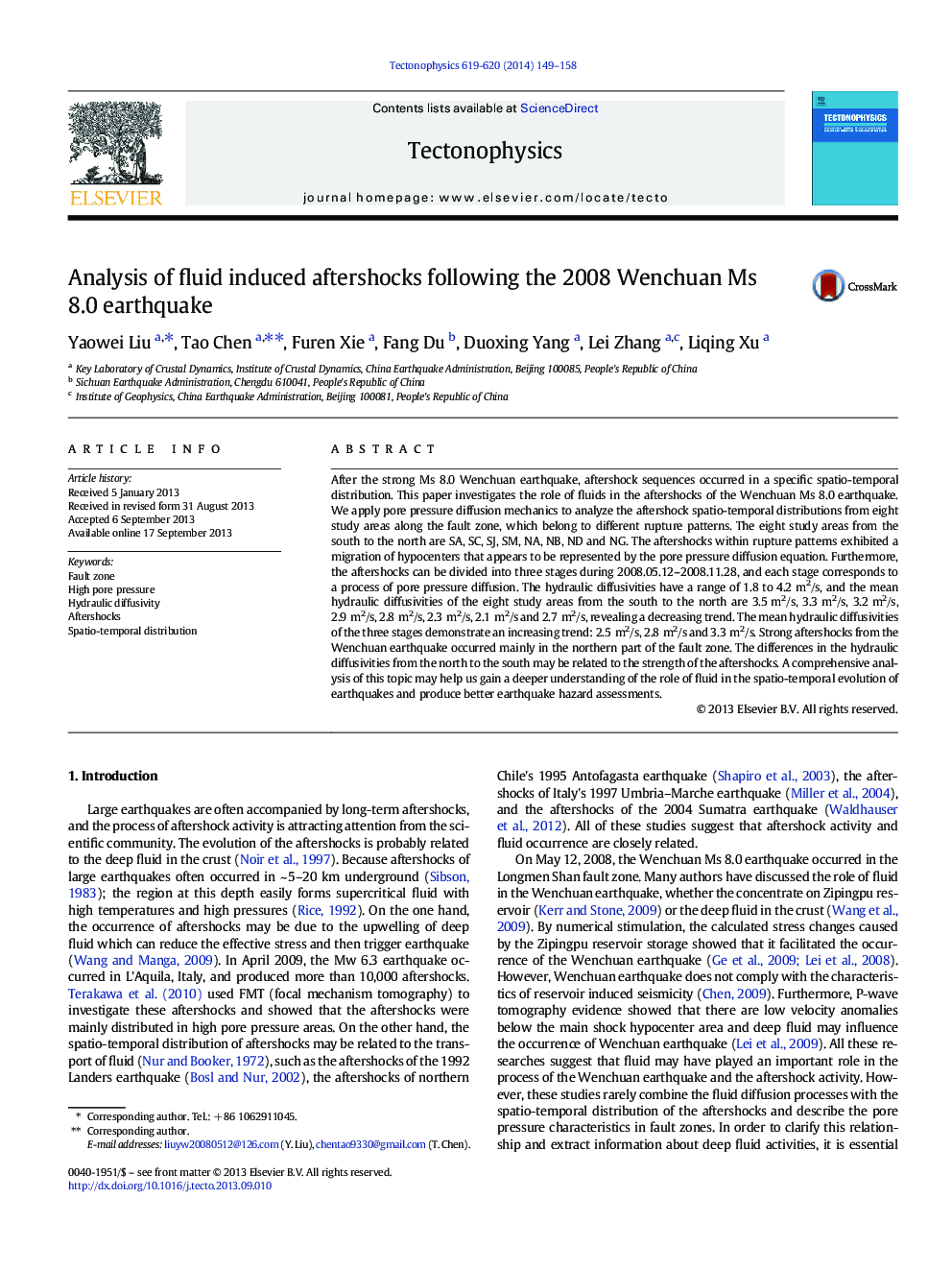| کد مقاله | کد نشریه | سال انتشار | مقاله انگلیسی | نسخه تمام متن |
|---|---|---|---|---|
| 4692024 | 1636770 | 2014 | 10 صفحه PDF | دانلود رایگان |

• The aftershocks can be divided into three stages during 2008.05.12–2008.11.28.
• The migration of aftershocks can be represented by the pore pressure diffusion.
• The hydraulic diffusivities have a decreasing trend from south to north.
• The hydraulic diffusivities have an increasing trend during three stages.
After the strong Ms 8.0 Wenchuan earthquake, aftershock sequences occurred in a specific spatio-temporal distribution. This paper investigates the role of fluids in the aftershocks of the Wenchuan Ms 8.0 earthquake. We apply pore pressure diffusion mechanics to analyze the aftershock spatio-temporal distributions from eight study areas along the fault zone, which belong to different rupture patterns. The eight study areas from the south to the north are SA, SC, SJ, SM, NA, NB, ND and NG. The aftershocks within rupture patterns exhibited a migration of hypocenters that appears to be represented by the pore pressure diffusion equation. Furthermore, the aftershocks can be divided into three stages during 2008.05.12–2008.11.28, and each stage corresponds to a process of pore pressure diffusion. The hydraulic diffusivities have a range of 1.8 to 4.2 m2/s, and the mean hydraulic diffusivities of the eight study areas from the south to the north are 3.5 m2/s, 3.3 m2/s, 3.2 m2/s, 2.9 m2/s, 2.8 m2/s, 2.3 m2/s, 2.1 m2/s and 2.7 m2/s, revealing a decreasing trend. The mean hydraulic diffusivities of the three stages demonstrate an increasing trend: 2.5 m2/s, 2.8 m2/s and 3.3 m2/s. Strong aftershocks from the Wenchuan earthquake occurred mainly in the northern part of the fault zone. The differences in the hydraulic diffusivities from the north to the south may be related to the strength of the aftershocks. A comprehensive analysis of this topic may help us gain a deeper understanding of the role of fluid in the spatio-temporal evolution of earthquakes and produce better earthquake hazard assessments.
Journal: Tectonophysics - Volumes 619–620, 21 April 2014, Pages 149–158